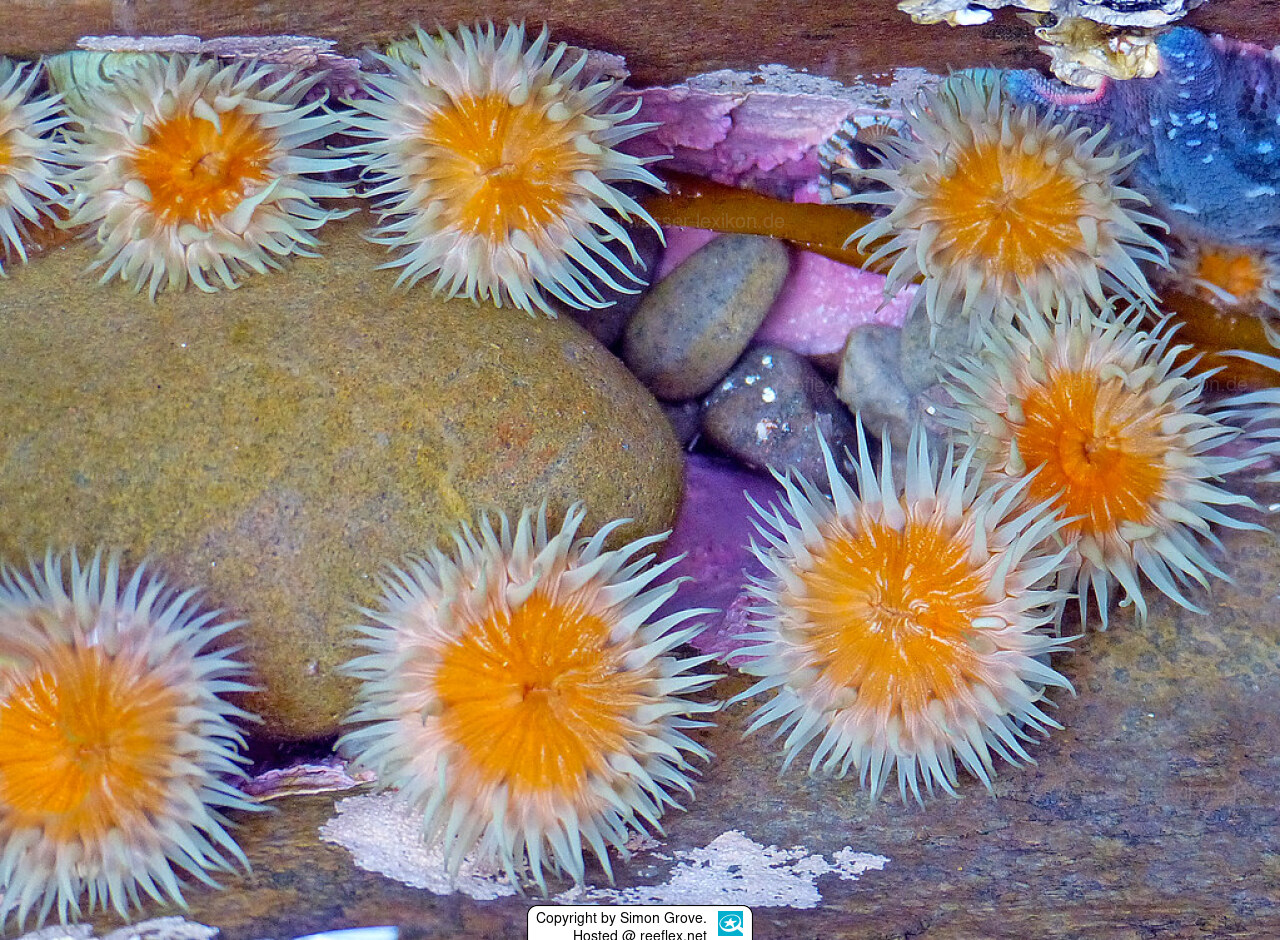Info
(Hutton, 1878)
Anthothoe albocincta is a small sea anemone that often lives in the intertidal area and down to depths of ~ 20 meters, preferring to live under overhanging ledges that protect it from direct sunlight at low tide.
The foot of the sea anemone is usually alternately orange and white striped, occasionally it can also show greenish stripes instead of the orange stripes, the tentacles are white and the oral disc of the anemone is also orange.Like the popular bubble anemone Entacmaea quadricolor, the sea anemone reproduces by division.
If you have the opportunity to encounter this sea anemone in its natural environment, you should not disturb the animals by touching them, because the sea anemones are able to secrete white long and thin thread-like structures with cnidocytes, called acontia, which are very painful and can be very itchy for a few days!
Recent research in New Zealand is examining the use of these sea anemones to hinder or even prevent the colonization of bryozoans and mussels on the hulls of ships by eating their larvae and acting as a surface competitor.Despite their cnidocytes, the sea anemones are “loved to eat” by the finger fin Chirodactylus spectabilis and various filefish - in the truest sense of the word.
Synonyms:
Actinothoe albocincta (Hutton, 1879)
Gregoria albocincta Hutton, 1879
Gregoria albocinctus Hutton, 1879
Sagartia albocincta (Hutton, 1879)
Sagartia albo-cincta (Hutton, 1879)
Anthothoe albocincta is a small sea anemone that often lives in the intertidal area and down to depths of ~ 20 meters, preferring to live under overhanging ledges that protect it from direct sunlight at low tide.
The foot of the sea anemone is usually alternately orange and white striped, occasionally it can also show greenish stripes instead of the orange stripes, the tentacles are white and the oral disc of the anemone is also orange.Like the popular bubble anemone Entacmaea quadricolor, the sea anemone reproduces by division.
If you have the opportunity to encounter this sea anemone in its natural environment, you should not disturb the animals by touching them, because the sea anemones are able to secrete white long and thin thread-like structures with cnidocytes, called acontia, which are very painful and can be very itchy for a few days!
Recent research in New Zealand is examining the use of these sea anemones to hinder or even prevent the colonization of bryozoans and mussels on the hulls of ships by eating their larvae and acting as a surface competitor.Despite their cnidocytes, the sea anemones are “loved to eat” by the finger fin Chirodactylus spectabilis and various filefish - in the truest sense of the word.
Synonyms:
Actinothoe albocincta (Hutton, 1879)
Gregoria albocincta Hutton, 1879
Gregoria albocinctus Hutton, 1879
Sagartia albocincta (Hutton, 1879)
Sagartia albo-cincta (Hutton, 1879)







 Simon Grove, Australia
Simon Grove, Australia















